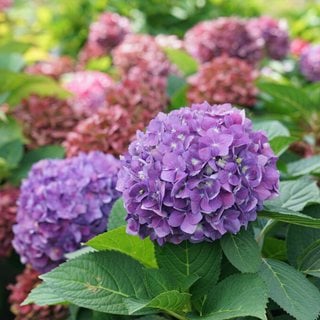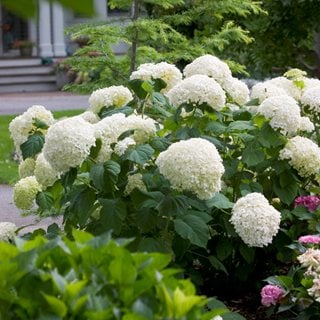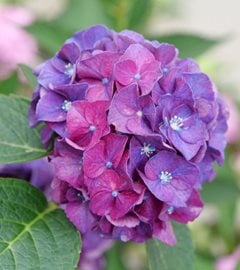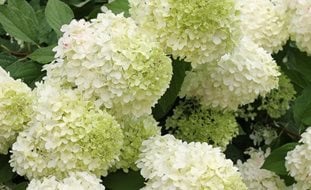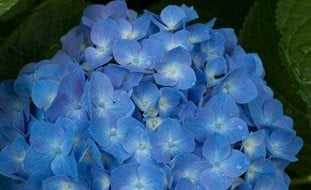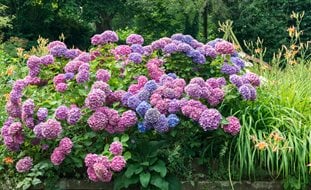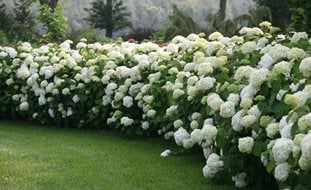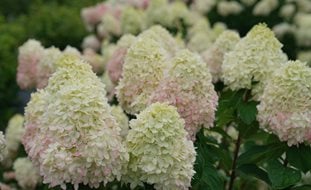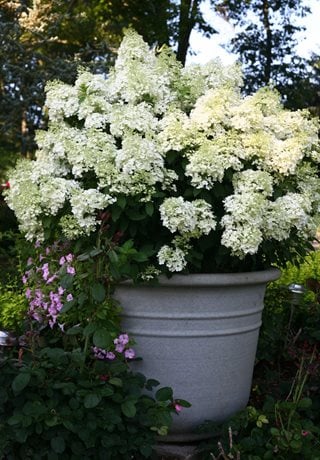When and How to Prune Hydrangeas
Learn when and how to prune your hydrangea plants for best bloom results.Pruning hydrangeas can feel intimidating. One wrong cut might mean no flowers the following year. The good news is that hydrangeas don’t need heavy pruning to stay healthy. The key is knowing which type you have, because each type forms flower buds differently. This guide shows you how to prune bigleaf hydrangeas and every other type so your plants bloom reliably year after year.
WHY PRUNING HYDRANGEAS CORRECTLY MATTERS
Most hydrangeas only need light cleanup and occasional shaping, but the timing and technique you use make a big difference.
- Correct timing ensures flowers year after year.
- Over-pruning can remove the flower buds that produce next year's blooms.
- Skipping pruning altogether can lead to weak stems and crowded growth.
PRUNING BY HYDRANGEA TYPE
Each hydrangea type sets flower buds at a different time of year, which is why pruning must be timed carefully. Here’s how to prune each type without cutting off future blooms.
Old Wood vs. New Wood
Hydrangeas form flower buds in different ways, which is why pruning times vary. They fall into three categories:
- Old wood: Flower buds form in late summer or fall and bloom the following year.
- New wood: Buds form on fresh spring growth and bloom the same year.
- Rebloomers: Produce flowers on both old and new wood.
BIGLEAF HYDRANGEAS (Hydrangea macrophylla)
- Bloom on old wood.
- Prune right after flowering ends in summer.
- Do not prune in fall, winter, or early spring, as this removes the buds.
- Remove dead, damaged, or crossing stems first.
- Lightly trim stems to shape the plant.
- In spring, tip-prune to encourage more but smaller flower clusters.
Pro tip: If your bigleaf hydrangea is not blooming, the cause is often pruning at the wrong time.
PANICLE HYDRANGEAS (Hydrangea paniculata)
- Bloom on new wood.
- Prune in late winter or early spring before growth begins.
- Keep the strongest stems and remove smaller side shoots to create a sturdy framework.
- Heavy pruning produces fewer but larger blooms, while light pruning results in more but smaller blooms.
SMOOTH HYDRANGEAS (Hydrangea arborescens)
- Bloom on new wood.
- Prune in late winter or very early spring.
- Light pruning produces many smaller blooms.
- Hard pruning to 12–18 inches above ground creates fewer but larger blooms that may need staking.
OAKLEAF HYDRANGEAS (Hydrangea quercifolia)
- Bloom on old wood.
- Require very little pruning.
- Trim after flowering to remove dead or damaged stems and to maintain size.
MOUNTAIN HYDRANGEAS (Hydrangea serrata)
- Bloom on old wood.
- Prune right after flowering.
- Best with light shaping and removal of dead wood.
CLIMBING HYDRANGEAS (Hydrangea petiolaris)
- Bloom on old wood.
- Minimal pruning is best.
- Remove only stray stems or lightly shape after flowering.
- Avoid heavy cutting, which can reduce growth and delay blooms for years.
REBLOOMING HYDRANGEAS
- Bloom on both old and new wood.
- Do not require regular pruning.
- Remove dead wood and tidy spent flowers in spring.
See more on the different types of hydrangeas.
"Think of deadheading as a quick tidy-up during the season, while pruning is the heavier cutting you save for when the plant is dormant." — Gardening expert Kristina, from Proven Winners ColorChoice Shrubs. Watch the full video here.
WHAT'S THE DIFFERENCE BETWEEN DEADHEADING AND PRUNING HYDRANGEAS?
It’s important to know the difference between deadheading and pruning so you don’t accidentally remove flower buds when you only want to tidy the plant.
- Deadheading: Removing faded flowers anytime to keep plants neat.
- Pruning: Deeper cuts for shaping, size control, or rejuvenation.
Deadheading does not interfere with next year’s blooms if cuts are made just above a leaf set.
HOW TO MAKE THE PRUNING CUTS
- Cut just above a pair of healthy leaves or a strong bud, with the high point of the cut about 1/4" above the bud.
- Angle the cut slightly so water does not collect on the cut surface.
- Remove weak or damaged stems at the base of the plant.
- Use sharp pruners for the cleanest cuts.
- Always sanitize blades between cuts to reduce the spread of disease.
TOOLS FOR PRUNING HYDRANGEAS
You don't need anything fancy for pruning hydrangeas.
- Bypass pruners are best for live stems because their overlapping blades make a clean cut that heals quickly and reduces the chance of disease
- Anvil pruners are best for dead wood because the single blade crushes rather than slices. This can damage live stems but easily handles dry, brittle ones.
GENERAL PRUNING ADVICE
The best advice for hydrangeas is to give them enough space to reach their mature size. When planted where they won’t outgrow their spot, they rarely need heavy pruning. In most cases, all that’s required is removing dead wood and keeping the plant healthy, which allows hydrangeas to grow and flower reliably year after year.
According to the University of Maryland Extension, occasional rejuvenation pruning can also freshen a plant’s appearance and may stimulate better flowering if the shrub has enough light.
FAQs AND TROUBLESHOOTING
What if I pruned at the wrong time?
- Old wood types: Flowers may be lost this year, but the plant will recover.
- New wood types: Usually still bloom later in the season.
- If your hydrangea still refuses to flower, check our guide on 8 Reasons Hydrangeas Won't Bloom.
Can I prune hydrangeas in the fall?
Best avoided, since fall pruning often removes buds on old wood types.
Should I cut hydrangeas back to the ground?
Only smooth hydrangeas can be cut back completely. Other types may be permanently damaged.
DON'T WANT TO WORRY ABOUT PRUNING YOUR HYDRANGEAS?
If the thought of trying to figure out if your hydrangea blooms on old wood or new wood (or both!) sounds daunting, try planting bigleaf hydrangeas from Proven Winners.
"We select all of our big-leaf hydrangeas for a nice, rounded, compact form, so they don’t require pruning to look handsome and tidy." All they ask is that you clean up any remaining flowers from the previous year when new growth begins in spring.
ABOUT THE AUTHOR
Linda Hagen is a writer and content coordinator at GardenDesign.com, where she combines firsthand gardening experience with expert insights. Based in Southern California (Zone 9B), she’s passionate about vibrant, pollinator-friendly gardens and believes the best lessons come from a trial-and-error approach to growing .
MORE ON HYDRANGEAS
RELATED:
How to Prune Roses
How to Prune Shrubs & Perennials
Updated: 1/25/23
